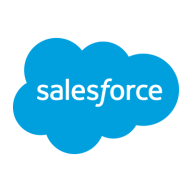


Find out what your peers are saying about Splunk, Wazuh, Microsoft and others in Security Information and Event Management (SIEM).
| Product | Market Share (%) |
|---|---|
| Splunk Enterprise Security | 9.3% |
| Wazuh | 10.9% |
| IBM Security QRadar | 7.2% |
| Other | 72.6% |
| Product | Market Share (%) |
|---|---|
| Tableau Enterprise | 11.0% |
| Microsoft Power BI | 14.5% |
| Amazon QuickSight | 4.9% |
| Other | 69.6% |
| Product | Market Share (%) |
|---|---|
| Thinkmap | 0.2% |
| Tableau Enterprise | 20.6% |
| Apache Superset | 9.3% |
| Other | 69.9% |


| Company Size | Count |
|---|---|
| Small Business | 105 |
| Midsize Enterprise | 44 |
| Large Enterprise | 225 |
| Company Size | Count |
|---|---|
| Small Business | 117 |
| Midsize Enterprise | 66 |
| Large Enterprise | 182 |
Splunk Enterprise Security is widely used for security operations, including threat detection, incident response, and log monitoring. It centralizes log management, offers security analytics, and ensures compliance, enhancing the overall security posture of organizations.
Companies leverage Splunk Enterprise Security to monitor endpoints, networks, and users, detecting anomalies, brute force attacks, and unauthorized access. They use it for fraud detection, machine learning, and real-time alerts within their SOCs. The platform enhances visibility and correlates data from multiple sources to identify security threats efficiently. Key features include comprehensive dashboards, excellent reporting capabilities, robust log aggregation, and flexible data ingestion. Users appreciate its SIEM capabilities, threat intelligence, risk-based alerting, and correlation searches. Highly scalable and stable, it suits multi-cloud environments, reducing alert volumes and speeding up investigations.
What are the key features?Splunk Enterprise Security is implemented across industries like finance, healthcare, and retail. Financial institutions use it for fraud detection and compliance, while healthcare organizations leverage its capabilities to safeguard patient data. Retailers deploy it to protect customer information and ensure secure transactions.
Tableau Enterprise offers powerful features for creating interactive visualizations, dashboards, and maps, including drag-and-drop functionality and easy integration with multiple data sources, promoting real-time collaboration and self-service analysis.
Tableau Enterprise stands out with its ability to create user-friendly, interactive visualizations, making it pivotal for business intelligence applications. Users benefit from its seamless connectivity and advanced analytical functions, facilitating data blending and storytelling. Despite a complex learning curve and high licensing costs, its features like geospatial analysis and efficient content distribution drive its indispensable value for data-driven insights. Enhancements in predictive analytics and support integration with machine learning tools further its capabilities across industries.
What are the most valuable features?Tableau Enterprise is widely used for business intelligence, supporting industries like healthcare, telecommunications, and finance. Organizations utilize it to analyze performance indicators, operational insights, and financial analytics, enhancing decision-making through interactive reports and real-time data integration.